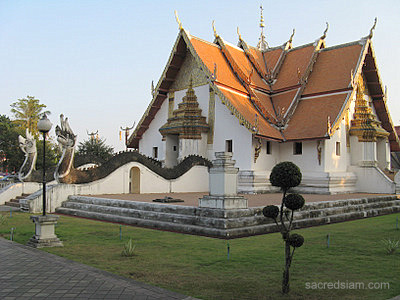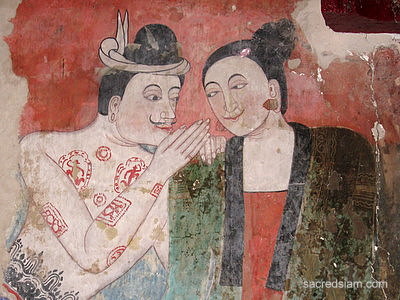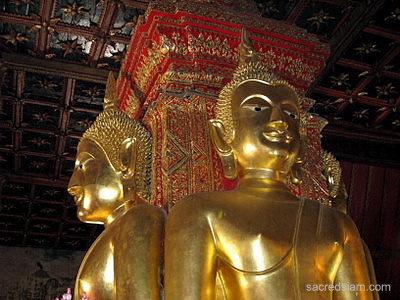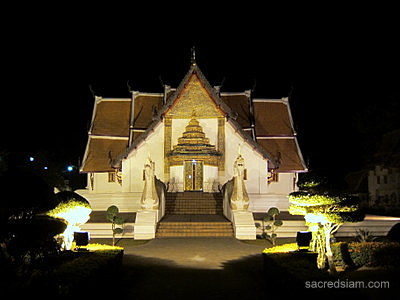History
Wat Phumin, considered to be northern Thailand's Sistine Chapel, is famous for its unique wall murals.
The temple, constructed in 1596 and restored in the 1870s, has an unusual cruciform shape with magnificent naga balustrades.
The nagas are in the sadeung (alarmed) position.
What to see
At its center, the ubosot contains four Sukhothai-style sitting Buddhas in the "subduing Mara" position. The hall is
known for its superb wall murals, executed in the late 19th century by the Thai Lue artist Thit Buaphan, and still in
relatively good condition. One of the murals,
depicting a tattooed man whispering to a woman is said to be a self-portrait of the artist. The paintings feature many
charming vignettes of northern country life.
Beside the temple is a Hell Dome, a variation of the Buddhist Hell Garden in a small, dome-shaped structure with a
tableau depicting the torments of a hell realm. The legendary monk Phra Malai hovers above the scene. The Hell Dome is
decidedly spooky at night.
Getting there
The temple is in the center of town and can be reached on foot from many guesthouses. Entrance is free and the building
is illuminated at night.
Updated: December 17, 2012.




